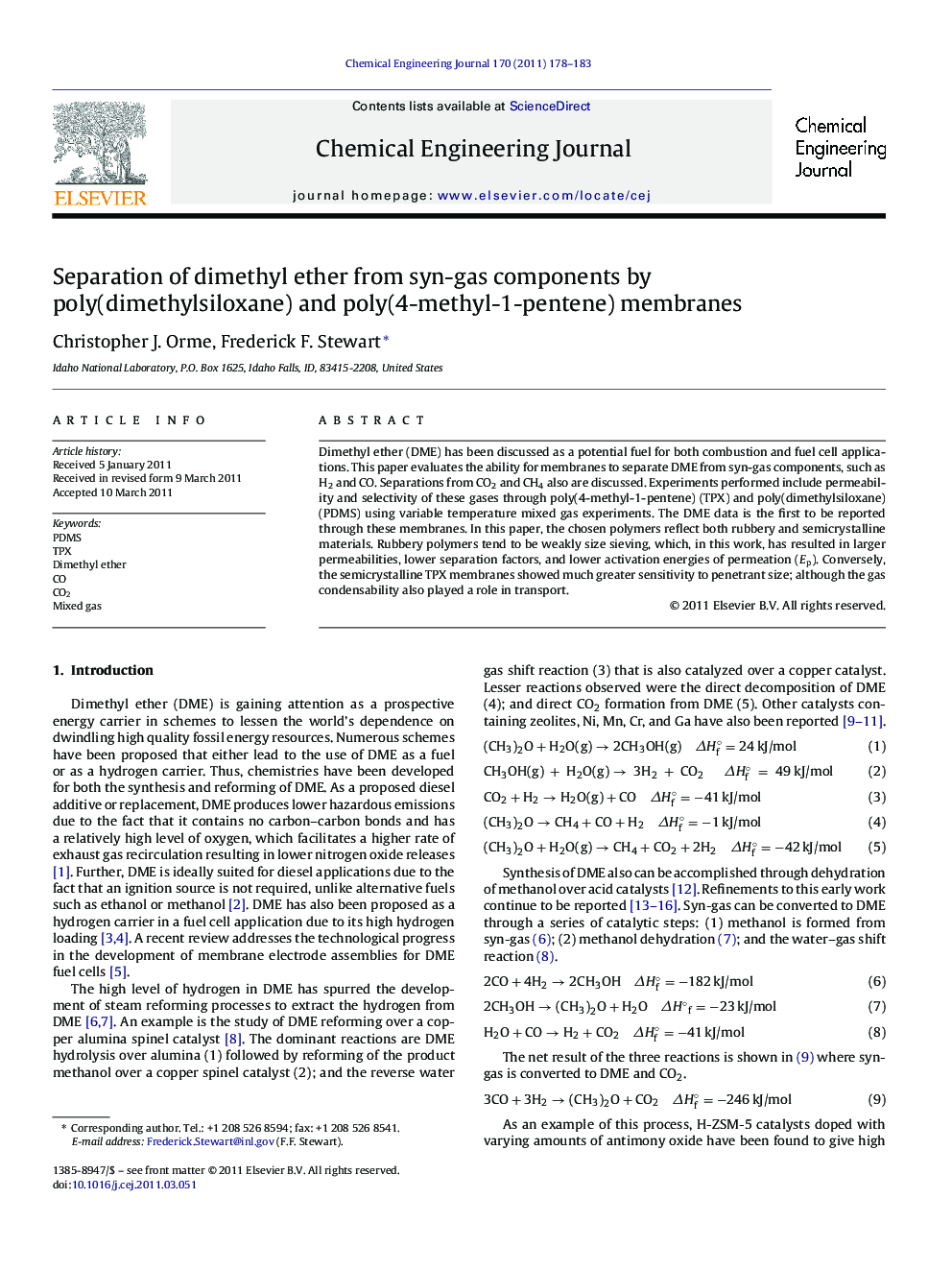| Article ID | Journal | Published Year | Pages | File Type |
|---|---|---|---|---|
| 151297 | Chemical Engineering Journal | 2011 | 6 Pages |
Dimethyl ether (DME) has been discussed as a potential fuel for both combustion and fuel cell applications. This paper evaluates the ability for membranes to separate DME from syn-gas components, such as H2 and CO. Separations from CO2 and CH4 also are discussed. Experiments performed include permeability and selectivity of these gases through poly(4-methyl-1-pentene) (TPX) and poly(dimethylsiloxane) (PDMS) using variable temperature mixed gas experiments. The DME data is the first to be reported through these membranes. In this paper, the chosen polymers reflect both rubbery and semicrystalline materials. Rubbery polymers tend to be weakly size sieving, which, in this work, has resulted in larger permeabilities, lower separation factors, and lower activation energies of permeation (Ep). Conversely, the semicrystalline TPX membranes showed much greater sensitivity to penetrant size; although the gas condensability also played a role in transport.
